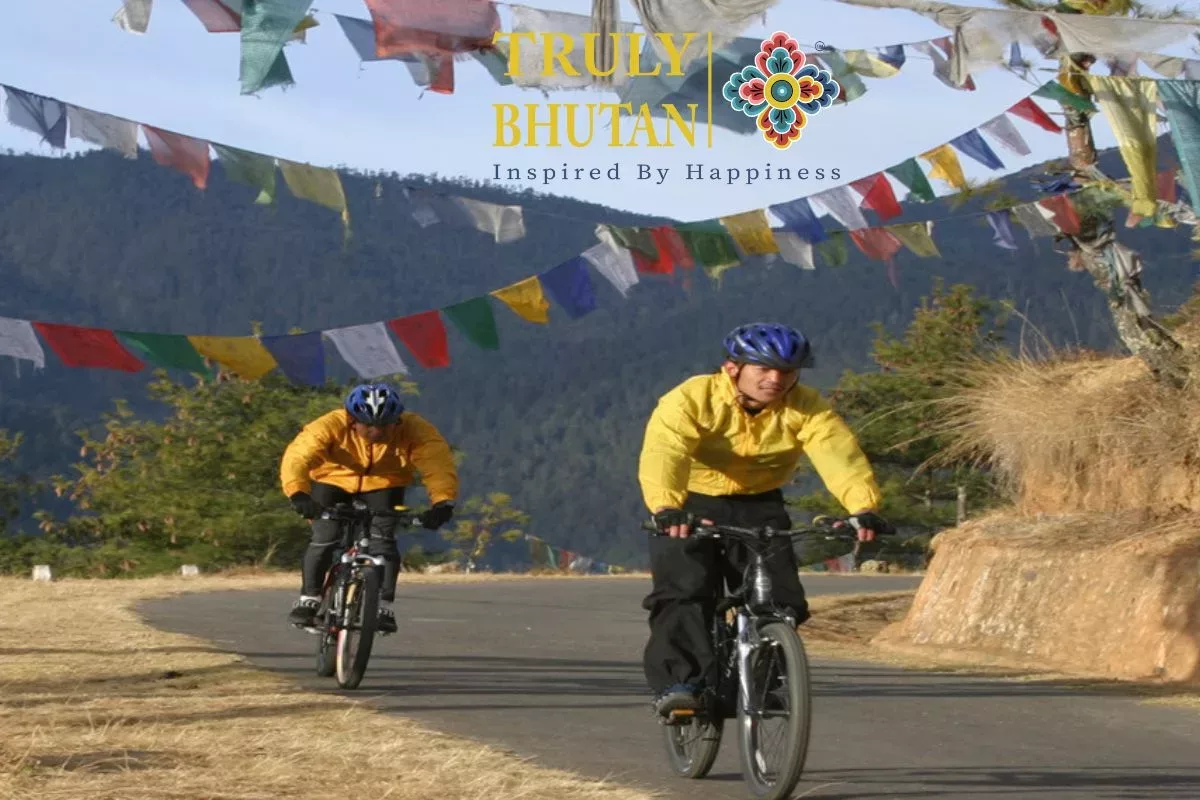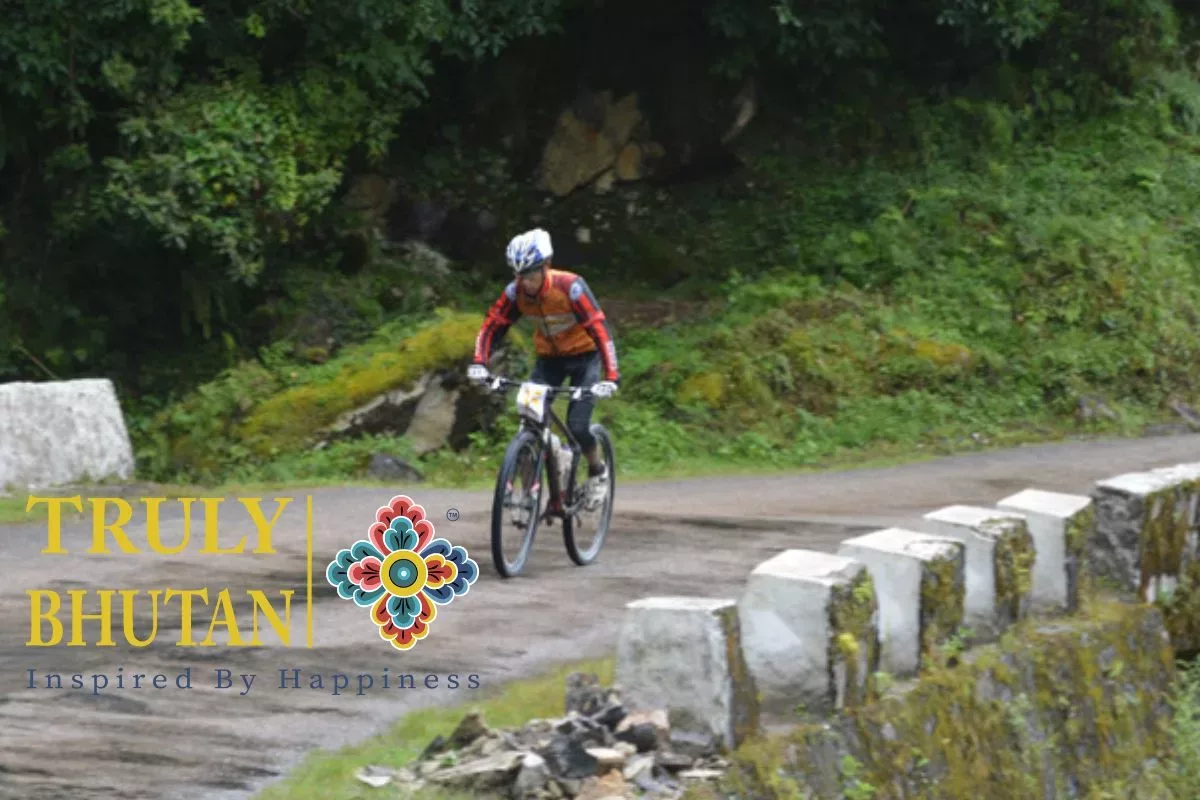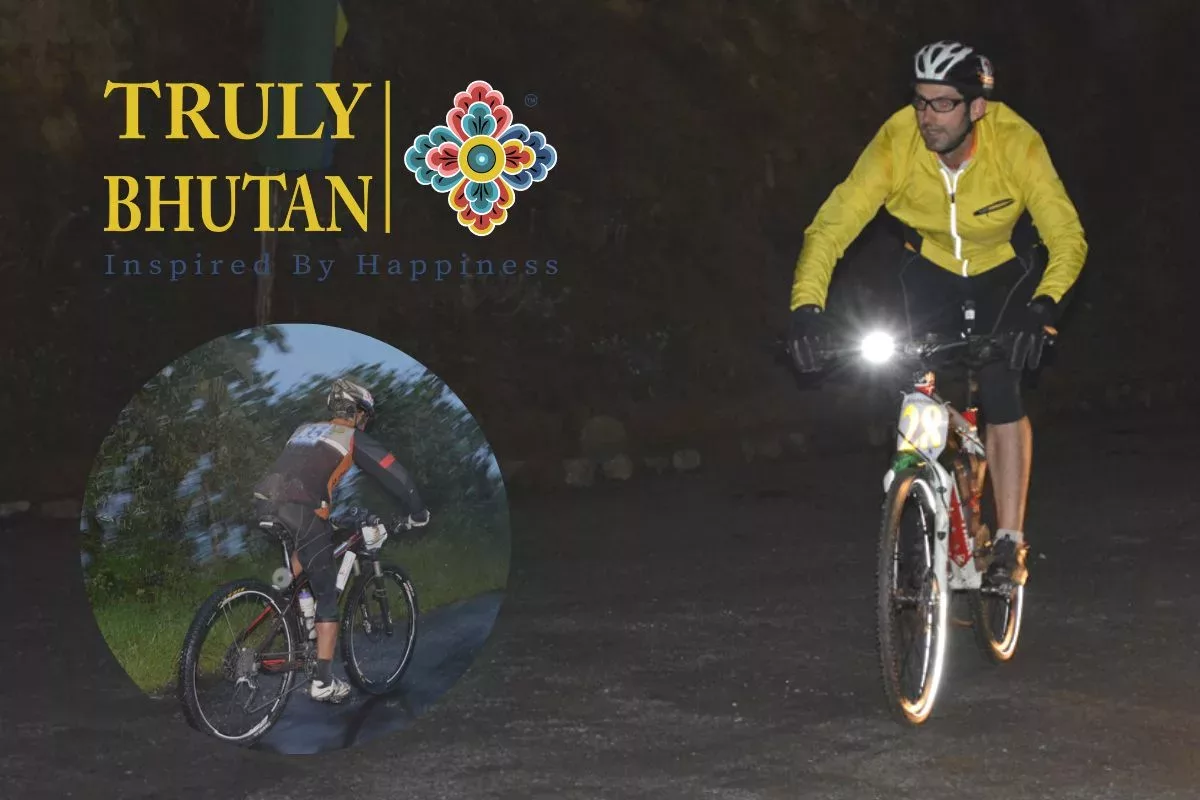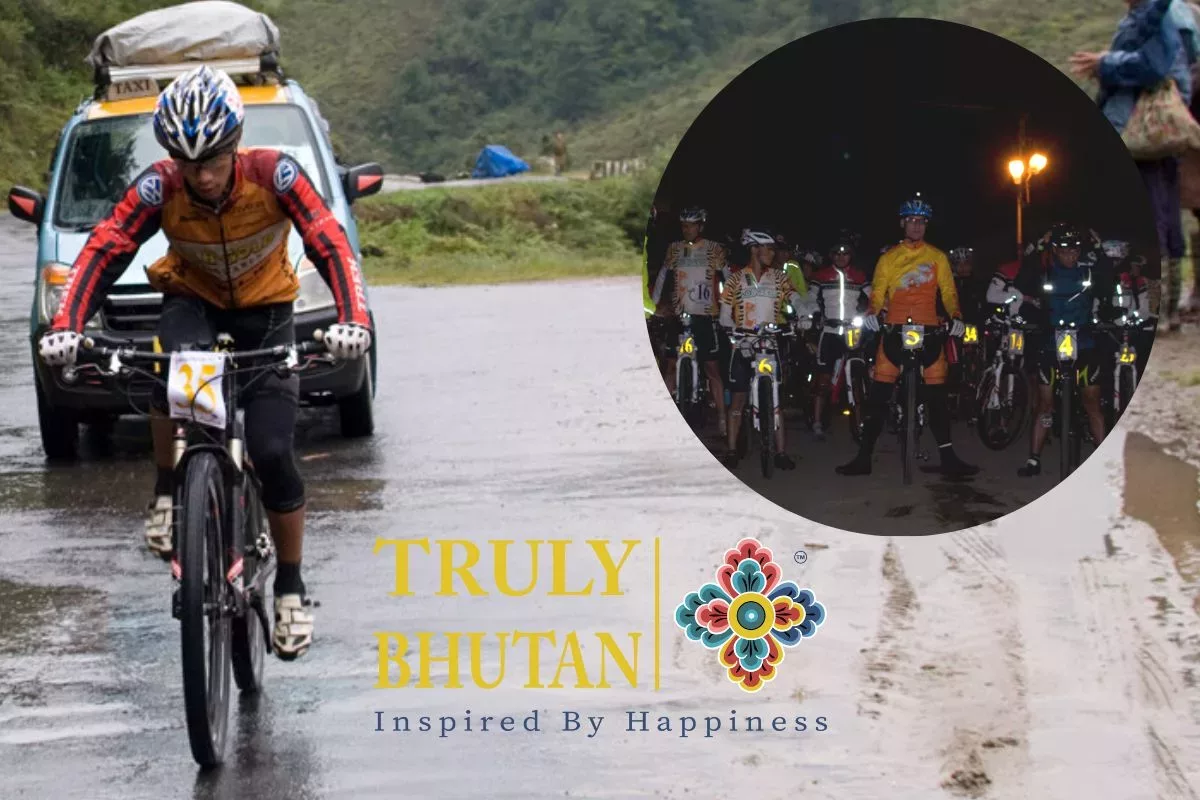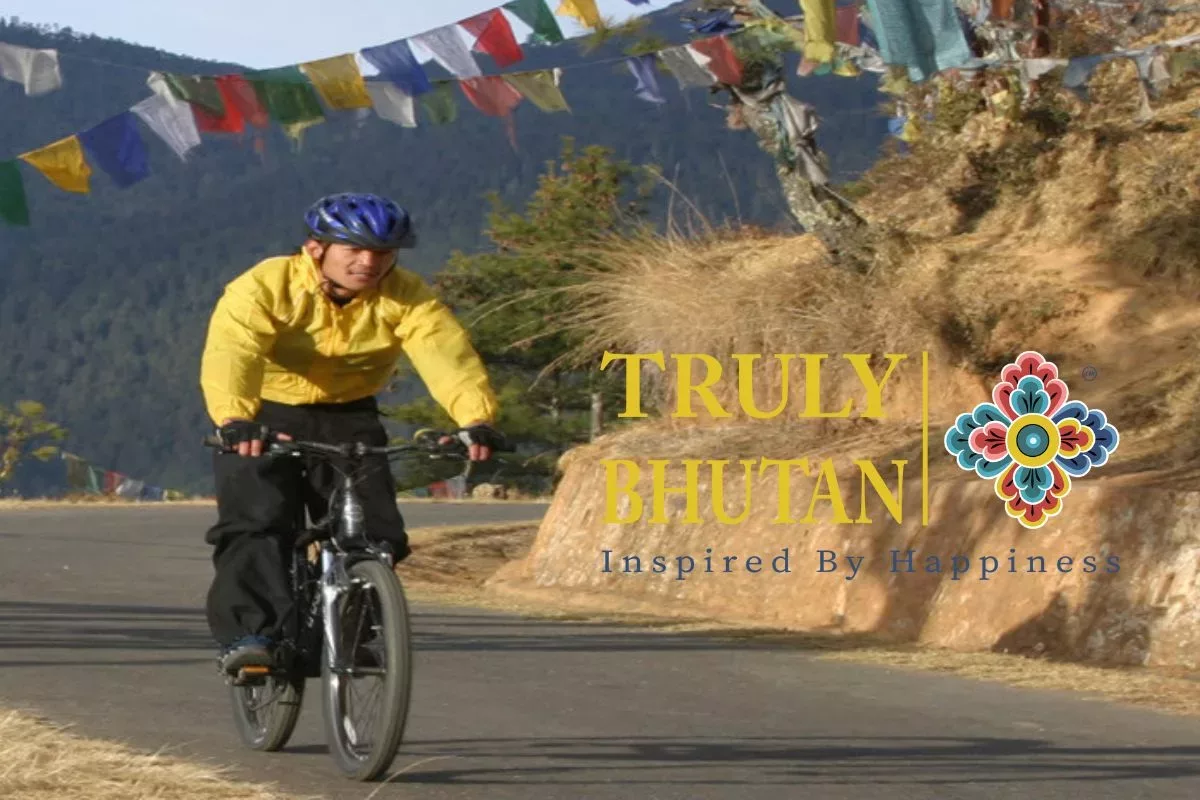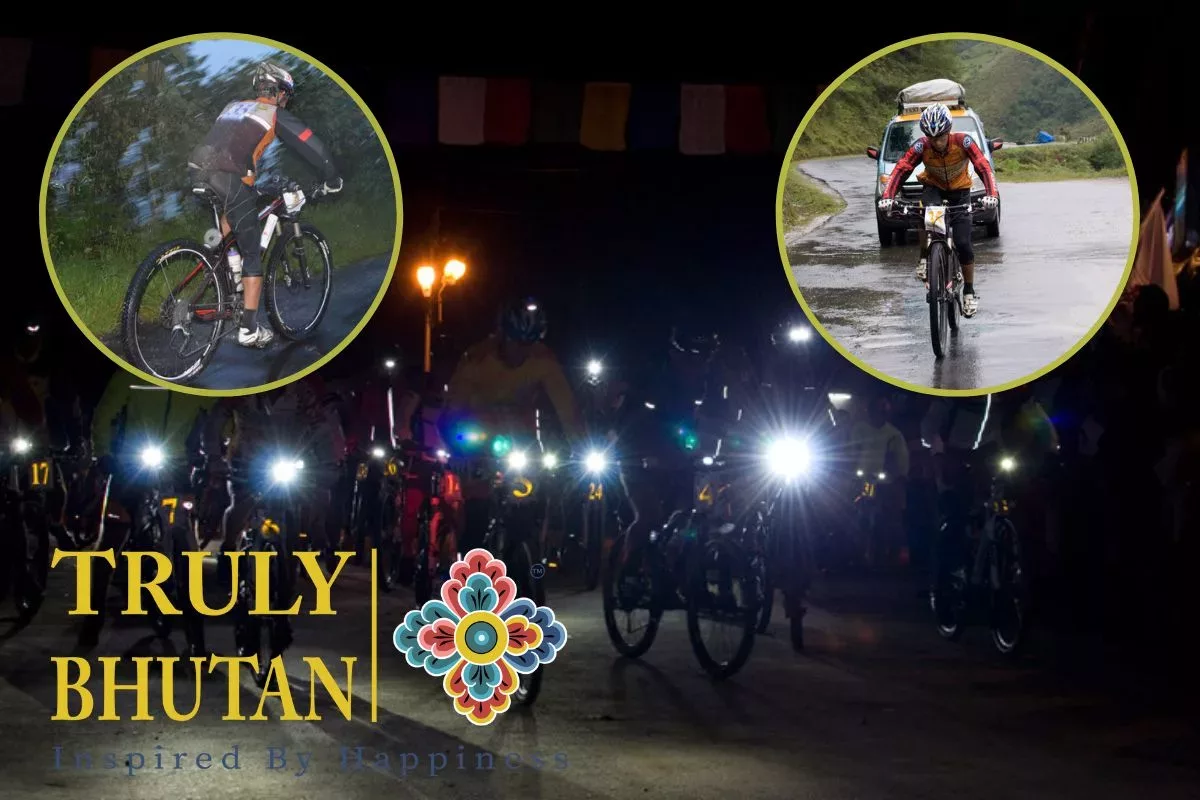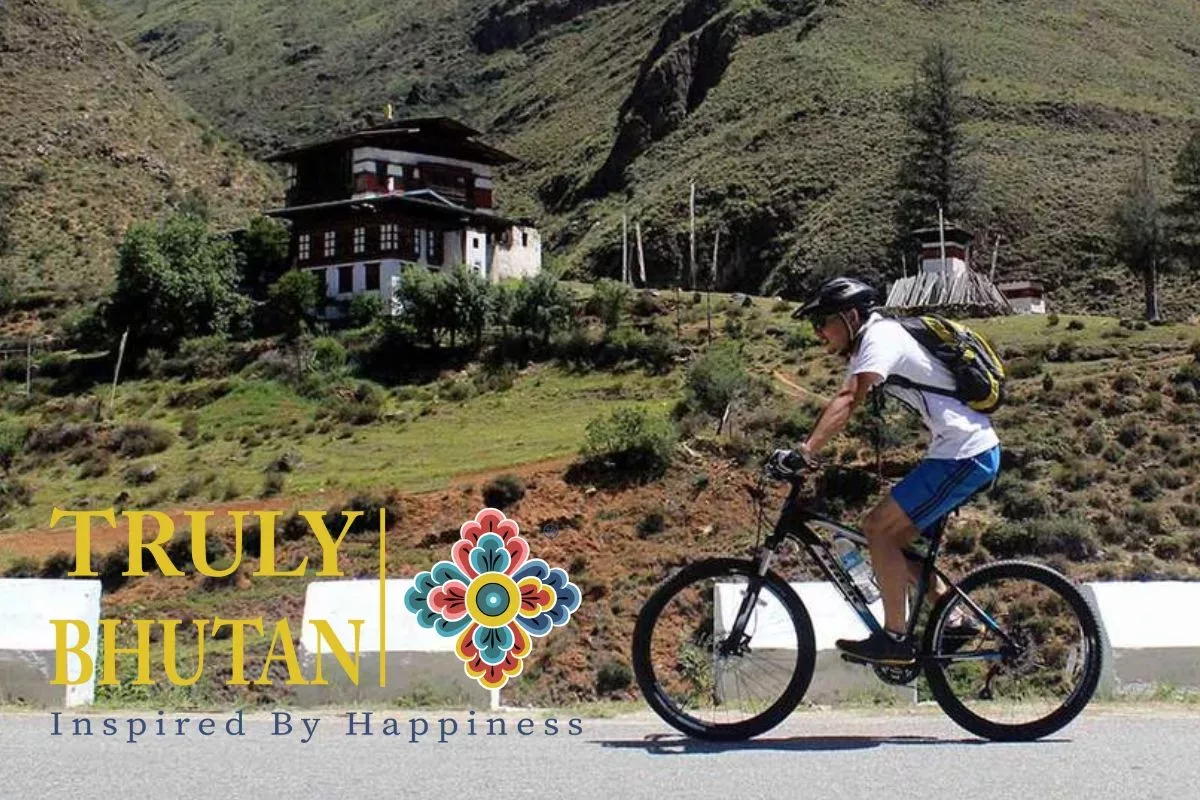Detailed Program
Start up the ride towards Thimphu where the average gradient of the road is excellent for cycling. There are a few steep climbs and descents as well. The trail passes thru rivers, a mixture of rice fields, pine forests, and hills dotted with Chortens & monasteries. Then appears a narrow gorge thru the widening valley of Namseling and finally reaches the suburbs of Thimphu and spotting of Semtokha Dzong built in 1627.
In downtown Thimphu, the ‘Bridge of Prophecy’ decorated with many prayer flags welcomes you where you continue down the main street. Visit/drive to Buddha Terrance for a spectacular view of the Thimphu Valley, then drive towards Takin Preserve to observe Bhutan’s national animal ‘Takin’ – a strange-looking beast resembling a bee stung moose as someone says. Also, visit the Memorial Chorten – a monument built in memory of Bhutan’s third King H.M. Jigme Dorji Wangchuk. Then move towards Folk Heritage Museum – a 300-year-old traditional house now transferred into a museum.
Overnight at Hotel (Thimphu).
Places and attractions:
- Tashichho Dzong
- Semthoka Dzong
- Dochu La Pass
- Memorial Chorten
- Changangkha Lhakhang
- Zangdopelri
- The Tallest Buddha Image
- Tango And Cheri Monasteries
- The Handicrafts Emporium
- Traditional Medicine
- Zorig Chusum Institute
- National Library
- Weekend Market
- Botanical Garden
- Thadrak Goemba
- Tashigang Goemba
- Chizhing Samtencholing Lhakhang
Accommodation options:
After breakfast drive towards Dochula Pass and from there ride downhill to the Punakha Valley passing through lush forest spread over a distance of about 50 kilometers. After the pass, the trail descends thru the varied forests and finally emerges the highly cultivated valley of Punakha.
En route goes for a short hike to the Chimi Lhakhang passing thru rice fields. It’s a temple of Drukpa Kunley who is also known as ‘the Divine Madman’ in Bhutan and is located on a hillside amid rice fields. The shrine is a pilgrimage site for childless couples.
After the hike enjoys some tea & snacks overlooking the fields. Afternoon: Visit Punakha Dzong located at the confluence of the Pho Chu ‘male river ‘and Mo Chu’ Female River. Punakha Dzong is considered arguably the most impressive Dzong of Bhutan.
Overnight at Hotel (Punakha).
Places and attractions:
- Punakha Dzong
- Khamsum Yulley
- Talo Goenpa
- Nalanda Buddhist College
- Chorten Nyingpo Lhakhang
- Sangchen Dorji Lhuendrup
- Limukha Village
- Ritsha Village
Accommodation options:
After breakfast drive along a winding mountain road thru oak and rhododendron forest, crossing over a high pass down into the Phobjikha Valley considered one of the most beautiful valleys in Bhutan. It’s also the winter home of black-necked cranes migrating from the Tibetan plains.
Also, go for 2 hours Gangtey natural trail from the monastery crossing the jungle before emerging to the valley floor. Option: Biking till Gangtey (The roads would not be easy as the whole roads are under construction which could be dusty, muddy, and have lots of potholes along the highway.)
Overnight at Hotel (Gangtey).
Places and attractions:
- Dargay Goemba
- Gangtey Gompa
- Temple Of Sha Radap
- Gaselo & Nahee Village
- Adha And Rukha Village
- Shaa Region Of Wangdiphodrang
- Bhey Langdrag Nye
Accommodation options:
After breakfast, drive or take a bike ride to Trongsa (6 hrs.). The trail passes thru the valley with spectacular views of historical dzongs. It’s climbing to Pele la pass at 3300 meters, en route coming across yak herders’ camps, especially in winter. Spot the high mountains like Rukubji and Chendbji. Here houses cluster at one place and fields in another. Then you will descend thru Rukubji village further down to Chendbji village. Here you will come across the 18th-century Nepalese-styled stupa built by Saint Shida.
Upon reaching Trongsa, visit the fortress at Trongsa or stop at the village known as Thangkha and meet with the locals there. Thangkha is one of the villages still practicing the Bon religion that worships trees and mountains as their good and goddess. If you are lucky you might encounter one of such rituals being performed.
Overnight at Hotel (Trongsa).
Places and attractions:
Accommodation options:
After breakfast, ride or cycle to Bumthang. The trail climbs rapidly thru a series of hairpins after Trongsa with great views of dzongs and the valleys. You will re-enter the forest after passing thru cultivated fields and reaching Yutong La (3400m). The landscapes change descending from a low point of 2650m at Chumey village to the wide-open Bumthang Valley.
You may bike downhill from the pass thru the historical old trade route which is not in use since the road has been built in these parts which are about 30 years, so the path is back to its complete wilderness form with nobody using it. It takes about an hour to get on the roadside at Chumey, the first four valleys of Bumthang.
Bumthang has four valleys (Chumey, Choekhor, Tang & Ura) with altitudes varying from 2600 to 4000 meters. In the morning, visit the Kurjey Lhakhang one of the most sacred shrines in Bhutan where Guru Rinpoche (Padmasambhava) meditated here. After Kurjey Lhakhang, a tarmac road heads south along the right bank of the river to Jambay Lhakhang- a temple built by the Tibetan King Songtsen Gompa in the 7th century and one of the oldest temples in Bhutan.
After lunch is a hike to the Tamshing Lhakhang founded in 1501 by Pema Lingpa which contains ancient Buddhist wall paintings. Later on visit the Swiss chess factory, Red panda (Swiss beer) factory, and Bee farms.
Overnight at Hotel (Bumthang).
Places and attractions:
Accommodation options:
After breakfast, explore around the Bumthang valley riding along and visiting temples and monasteries that are yet to cover/see.
Overnight at Hotel (Bumthang).
Places and attractions:
Accommodation options:
Start early after breakfast and drive/ride to Mongar. En route witness some of the most alluring views Bhutan has to offer. The hillside is covered with evergreen junipers and colorful rhododendrons with the sounds of rushing streams and cascading waterfalls.
Overnight at Hotel (Mongar).
Places and attractions:
Accommodation options:
Early in the morning proceed to drive with a few hours of biking or continue to Trashigang. It’s a 3-hour drive passing along Chirr pine forest and rhododendron to ‘Yadi loops’, one of Bhutan’s most beautiful road works.
En route pass Drametse Monastery, the biggest and most important monastery in Eastern Bhutan the monastery is also popular for its Nga Cham drum dance. Upon arrival at Trashigang, visit the Trashigang Dzong and also visit to see how local wine is brewed in a typical farmhouse.
Overnight at Hotel (Trashigang).
Places and attractions:
- Trashigang Dzong
- Chador Lhakhang
- Rangjung Monastery
- Trashigang Radhi
- Merak & Sakteng
- Muenselling Institute
- Khaling National Handloom
Accommodation options:
After breakfast, the bike ride is for about a few hours then continue the journey driving till reaching Samdrup Jongkhar. Upon arrival at the border, Our Host will bid you farewell and soon the remote and legendary Dragon Kingdom disappears again behind its guardian mountains with lots of memories to cherish.
Places and attractions:
FAQ on Bhutan By bike
Bhutan is a place that can be visited at any time of year and will not disappoint. However, March to May is considered peak season owing to the famed Paro Tshechu (Festival) that takes place during March/April (according to the Bhutanese Lunar calendar) and the Rhododendron flower blooming season. Furthermore, the months of September to November include various festivals, which increase visitor arrivals.
As a result, if you wish to travel during these months, you must plan ahead of time because Bhutan has limited flights and lodgings. During the other months, there are fewer tourists/visitors, thus you will have a more gratifying experience and the price will be reduced. Summer months (June-July) and winter/spring months (December-March) are highly recommended. However, if you are hiking, you will need to travel during the peak season months to find ideal circumstances.
Let’s put this misconception to rest right now! A Vacation in Bhutan may appear to be pricey since the Bhutanese government has implemented an all-inclusive daily fee structure. Most tourists, in our experience, like this approach and comment on how fantastic the ‘value for money truly is and that we should never change it.
Given that each guest gets access to a private guide, driver, private car, and a land package that includes all meals, accommodations, sightseeing, entrance fees, transfers, taxes, and government royalties, it is a good bargain.
With the advent of ATMs in Bhutan, Visa and MasterCard credit and debit cards, as well as bank debit cards, may now be used to withdraw local cash. The Ngultrum, the local currency, is tied to the Indian Rupee, which is widely accepted across the Kingdom (except for 500 & 1000 rupee notes which are not accepted).
We strongly advise guests to bring USD cash and/or traveler’s cheques as a more convenient option for bringing in Indian rupees, which we recommend as a backup in case ATMs are not operating. Take small denominations of USD for little daily purchases, and larger denominations of USD for converting into Nu at local banks and tipping guides/drivers after the tour.
Bhutan, like numerous other places, is undergoing climate change. Summers (June-mid-September) are often warmer, humid, and wetter, whereas winters (December-early March) are colder and dry. Winter nights are frigid, but the days are clear, sunny, and unexpectedly moderate in the valleys, with only two heavy snowfalls per year on average. August is the wettest month.
Bhutanese people prefer not to offer presents of any type to individual children to prevent encouraging a culture of begging. A present of colored pens/pencils, etc. is excellent for a local educator.
Even better, as you leave, leave a present such as an oral hygiene package (dental floss, toothbrush, gum, and cologne) or some warm clothing/shoes. By visiting Bhutan, you are already helping to its development, since the government receives $200 in Sustainable Development Fees.
- Inclusion
- Exclusion
- Insurance
- Airport pick-up and drop-off by private vehicle.
- 3-star accommodation (4 & 5 stars may require an additional premium update).
- Bhutan visa fee – including all necessary processing
- Route Permit
- Three meals per day during your stay in Bhutan
- A licensed Bhutanese tour guide
- All land transportation by private vehicle
- Camping equipment and haulage for trekking tours
- Sightseeing as per itinerary
- Monuments entrance fees where applicable
- Drinking water
- All internal taxes and charges
- A sustainable development fee of $200. (This sustainable development fee goes towards free education, free healthcare, and poverty alleviation, along with the building of infrastructure.)
- Airfare & Travel Insurance
- Expenses of personal nature, Tips to guides and drivers
- Expenses occurred due to unavoidable events i.e. road wrecks, flight delays etc.
Package does not include insurance of any kinds, and that you are required to obtain separate coverage from your home country before your trip begins.

